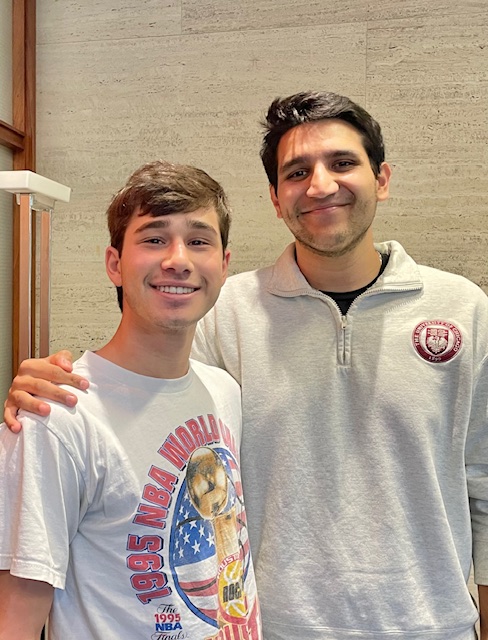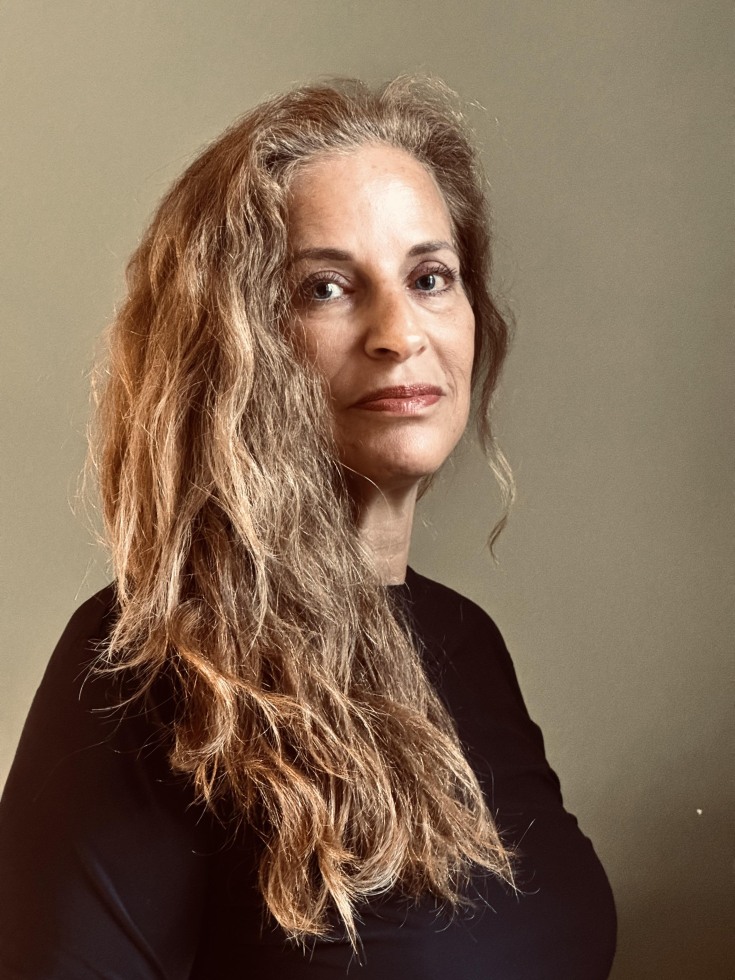PROVIDENCE, R.I. [Brown University] — How can Palestinian and Israeli children living amid conflict be given a voice? With paper, colored pencils and markers, Brown student Canaan Estes suggested in a Fall 2024 proposal he wrote for a Brown course called Israel-Palestine: Public Humanities.
Estes, a Jewish student who was living in Israel on a gap-year program during the Hamas attacks of Oct. 7, 2023, was inspired by the book “I Never Saw Another Butterfly,” which shares children’s drawings and poems from the Terezín concentration camp during the Holocaust.

“I had this idea to display Israeli and Palestinian children’s drawings together,” said Estes, now a sophomore pursuing an independent concentration in genocide and reconciliation studies. “From the get-go, I wanted this to be a project that was collaborative and shared between these communities.”
The class assignment did not require carrying out the proposal, “but the idea was so powerful that we had to try to make it a reality,” said Katharina Galor, an associate teaching professor of Judaic studies. Galor leads the course, which explores Israeli and Palestinian heritage, traditions and history and examines how cultural expressions and events can foster more nuanced understanding.
A year later, Estes’ idea has resulted in “Innocent Knowledge,” a research project, website and exhibition that showcases drawings from 393 children from 15 different communities in Israel, the West Bank and Gaza. It is on view at Central Synagogue in New York City through Oct. 8 and will travel to Brown’s Ruth J. Simmons Center for the Study of Slavery and Justice for an exhibition in early 2026, with additional locations currently being planned.
“The exhibition has helped our community connect to their values, to connect to what’s going on in the world, and to bring to life the perspective of the youngest people impacted by the ongoing war between Israel and Hamas in Gaza,” said Sarah Berman, a rabbi at Central Synagogue and a member of Brown’s Class of 2002 who organized the exhibition at the synagogue.
Galor, who is co-director of “Innocent Knowledge,” said that as far as she knows, this is the first time that artwork made by Israeli and Palestinian children living across the region is being presented together in an exhibition. The project includes works by 161 children from Israel, 158 from the West Bank and 74 from Gaza.
Some of the educators and caregivers the researchers contacted feared backlash, either for being perceived as normalizing relations or for including “the other side,” Galor said, while others were enthusiastic about sharing the children’s perspectives with international audiences.
The drawings, which do not list the creators’ names, are primarily organized according to six themes, including “Family and Home,” Violence and Loss” and “Hope and Resilience,” rather than by geographic origin or identity.
“You walk into the exhibition hall and see the drawing, and you see the humanity of the child first,” Galor said. “In some of the drawings there’s an Israeli flag or a Palestinian flag that gives you an indication of who the child might be, but in most cases you really don’t know.”
